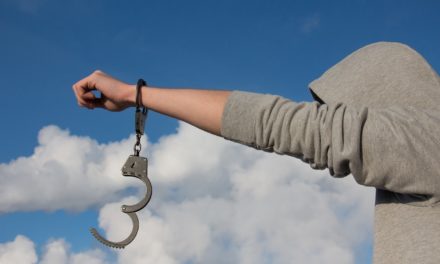
When attendees at a recent microdosing event in the Netherlands were asked by scientists to eat psychedelics and take a few brain tests for a psychedelic research study, nearly half of them jumped at the opportunity. This shouldn’t be too surprising—psychonauts will do just about anything for science, after all.
Recently published in the journal Psychopharmacology, the study set out to discover whether and how microdosing with psilocybin truffles can affect one’s thought process, and found that while microdosing has the potential to help us see ideas or bridge connections that we otherwise might not, it probably won’t make us smarter overall—at least using conventional metrics.
Microdosing with psychedelics like LSD and psilocybin mushrooms is a practice which involves regularly taking tiny, subperceptual amounts of a substance to experience as many of the benefits as possible while reducing the potential for negative effects. This practice first became popular in the open workspaces of Silicon Valley but has since spread to more mainstream places, even though these substances are illegal in the United States and most other countries around the world.
There has been an abundance of anecdotal reports from microdosers who believe that eating miniscule doses of psychedelic drugs (typically one-tenth to one-twentieth of an average recreational dose) has given them boosts of creativity, a capacity for solving challenging problems, and an overall increase in productivity, among a myriad of other purported perks. Scientists and skeptics alike have been wondering if there is something legitimate behind these claims, and this recent study attempted to add to our overall understanding about the efficacy of microdosing.
What Are Psilocybin Truffles?
The participants consumed psilocybin truffles rather than the more well-known category of psilocybin mushrooms, and there are some significant differences between the two that are worth discussing before we go any further.
Mushrooms are the fruiting body of fungi, the part that you would see if you were walking around in a forest, for example. However, there is a lesser-known section of fungi located under the earth that is known as the sclerotia. This is where truffles exist. Both mushrooms and truffles can contain psilocybin.
There are a few distinct differences between mushrooms and truffles. The former have been used by traditional societies for thousands of years whereas the latter only gained popularity within the last decade or so. A mushroom trip is a bit longer than one provoked by truffles (between 4-8 hours versus 3-5 hours). Experience reports seem to indicate that mushroom trips are more intense, deep, and introspective than truffle trips, which have been described as gentler and more fun.
The Dutch government banned fresh psilocybin mushrooms in 2008 (the dried variant was already illegal) after a string of perilous incidents involving them, including the death of a 17-year-old who jumped to her death after allegedly taking them. However, psilocybin truffles remained legal and are still sold in shops in Amsterdam and online (for people living in Europe, that is.)
Due to the illegality of psilocybin mushrooms in the Netherlands (and the ease with obtaining psilocybin truffles instead), the truffle variety was used in this microdosing study, which is the first of its kind.
Microdosing with Psilocybin Truffles
The scientists approached people at a microdosing event held by the Psychedelic Society of the Netherlands and asked them if they wanted to take a microdose of dried psilocybin truffles—and a few tests—for a research study. Out of 80 attendees, 38 were willing to participate.
Each participant completed three tasks before consuming the truffles. The first, called a “Picture Concept Task,” was designed to gauge convergent thinking, which is the ability to reach a single solution to a well-defined problem, such as finding a concept to append to the beginning of three seemingly random ideas: -man, -market, and -bowl. (The answer is “super.”)
The second, an “Alternative Uses Task,” assessed their divergent thinking, a type of cognitive flexibility that involves the capacity for thinking of many possible solutions to a loosely defined problem. An example of this might be listing all of the things that you can do with a brick.
The third and final test, the “Raven’s Progressive Matrices Task,” looked at potential changes in fluid intelligence, which is the ability to think logically and develop solutions to problems in novel situations, independent of any acquired knowledge. This type of intelligence is necessary for logical problem solving and includes both inductive and deductive reasoning.
After completing these assessments, each participant consumed ~0.37 grams of dried psilocybin truffles. An average recreational dose tends to be about three (dried) grams; the microdose in this study was approximately one-tenth of a typical dose.
Roughly an hour and a half after eating the truffles, the participants took the tests again. While their fluid intelligence didn’t improve, the study found that microdosing psilocybin did appear to improve convergent and divergent thinking.
This means that it was easier for the participants to quickly come up with a single solution to a problem—in addition to brainstorming potential alternative solutions—after microdosing than before, but their intelligence and capability for analyzing the tasks was not affected.
The Study’s Limitations
As the first study of its kind, it had several limitations. For starters, there was no control group. It involved a small sample size of only 38 people, didn’t look for a placebo effect, and neither the researchers nor the participants were blinded to the dosing.
It’s also possible that the participants may have performed better on the second test simply because they had taken it once before.
Expectations may have also impacted the results. Since it was conducted at a psychedelic event, many of the participants not only had experience with psychedelic substances—it’s likely that many already had faith in their efficacy, which could have skewed the results.
The study’s authors are aware of these limitations and advised that future studies should attempt to repeat their results by employing a double-blind placebo-controlled experimental design, conducting research in a laboratory setting, and including the subjective strength of the experience as a variable.
Keeping these limitations in mind, we should acknowledge that although this is merely a preliminary study, the results were significant enough that the researchers feel further research should be conducted in this area.
Prospective Microdosing Research
This study has contributed to the emerging body of microdosing research, which is still quite small at this time. As the study’s authors wrote, hopefully these results will inspire more scientific research into the potential benefits of microdosing psychedelics. At the moment, there is one ongoing LSD microdosing study that has been announced, but until more studies are published, this field will remain ripe for inquiries of all kinds.
Future microdosing studies may find that the practice is capable of providing many of the positive benefits of psychedelics (anxiety reduction, relief from pain, and addiction treatment, to name a few) while reducing any potential negative effects (i.e. “bad” or “challenging” trips) that can occur with larger doses.
If this proves to be the case, microdoses of psychedelics could eventually become a safer, more effective alternative to traditional treatments for conditions like anxiety and depression. Even for people who don’t suffer from issues like these, perhaps microdosing could be a valuable tool for increased creativity or productivity.










